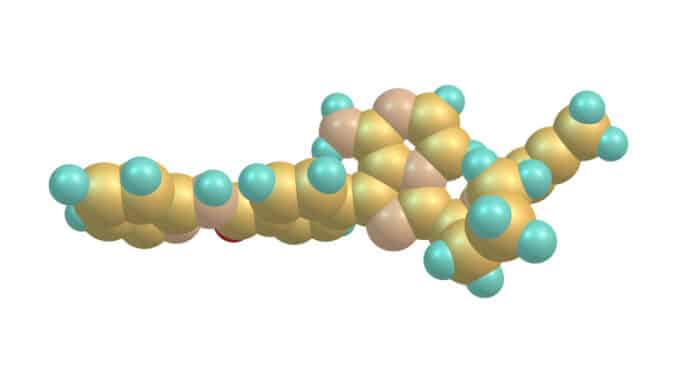
Researchers have found that adding ruxolitinib to standard tyrosine kinase inhibitor (TKI) treatment significantly increases the number of patients with chronic-phase chronic myeloid leukemia (CP-CML) who achieved deep molecular responses, potentially allowing them to discontinue treatment.
“Treatment free remission has become a common therapeutic goal for patients with CP-CML, said Kendra L. Sweet, MD, a researcher at the Moffitt Cancer Center. “In spite of this, only approximately 40 to 50 percent of CP-CML patients achieve molecular responses that are deep enough to qualify them for an attempt to discontinue TKI therapy.”
Sweet is the principal investigator of the SWOG S1712 clinical trial and will present these findings at the European School of Hematology’s 26th Annual John Goldman Conference on Chronic Myeloid Leukemia in Prague this weekend.
Chronic myeloid leukemia is primarily treated with TKIs, which target specific pathways involved in cancer cell proliferation. However, leukemic stem cells often evade these therapies by gathering within the bone marrow, leading to persistent disease. Ruxolitinib, an oral Janus kinase (JAK) inhibitor, has been shown in preclinical studies to modify the bone marrow environment, enhancing the effectiveness of TKIs against these resistant cells.
In the trial, 75 patients with detectable disease despite TKI treatment for at least one year were randomized to receive either continued TKI therapy alone or the combination therapy of TKI plus ruxolitinib. After 12 months, patients were evaluated for molecular response, measured via a blood test that detects RNA from a gene specific to leukemic cells. A molecular response (MR) score of MR4.0 indicates a reduction of this RNA to 0.01 percent or less of the baseline level, while MR4.5 signifies a complete molecular response.
The results showed that 46 percent of patients receiving ruxolitinib achieved an MR4.0 response, compared with only 26 percent in the TKI-only group. Additionally, the proportion of patients achieving an MR4.5 score was also higher in the ruxolitinib group, at 14% versus 3% for those receiving ruxolitinib only.
Notably, two years after treatment initiation, 29 percent of patients in the ruxolitinib arm met the criteria established by the National Comprehensive Cancer Network (NCCN) to discontinue treatment, compared with 11 percent in the control group.
“In this study, the addition of ruxolitinib to TKIs resulted in significantly more patients with durable, deep molecular responses, Sweet noted. “Ultimately, this could lead to more patients successfully discontinuing treatment, which has been shown to significantly reduce healthcare costs and improve health-related quality of life.”
Toxicity profiles were similar between the two groups. While two patients in the ruxolitinib arm experienced grade 3 treatment-related adverse events, three patients in the TKI-only arm also had grade 3 events, along with one patient experiencing a grade 4 adverse event. Grade 1/2 anemia was more frequently observed in the ruxolitinib group.
Sweet and colleagues are now working to identify which patients with CML are most likely to benefit from the addition of ruxolitinib to their TKI treatments and further trials are warranted to determine whether this combination therapy could increase the number of patients achieving treatment-free remission.
The SWOG S1712 trial is supported by the National Cancer Institute (NCI), part of the National Institutes of Health (NIH), and conducted through the NIH-funded National Clinical Trials Network.










